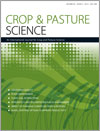CP11302Genetic diversity among a founder parent and widely grown wheat cultivars derived from the same origin based on morphological traits and microsatellite markers
Excellent parents have contributed significantly to the improvement of wheat in the world. This study was to determine whether the process of breeding to a founder parent has led to some enrichment of chromosomal segments of importance, and we found that specific chromosomal regins may be the basis for certain cultivar serving as a founder parent. Our study provides valuable clue on breeding novel founder parents.




